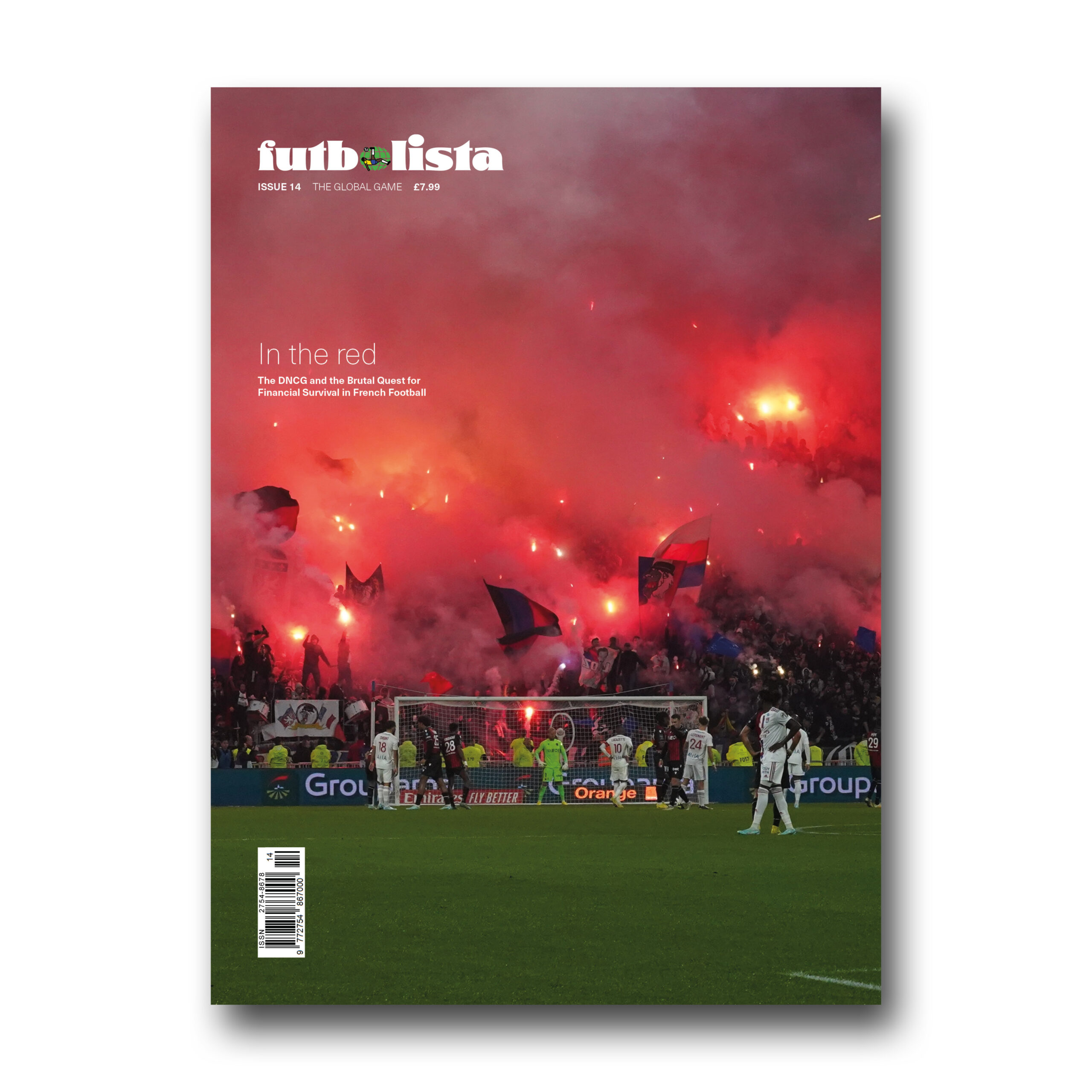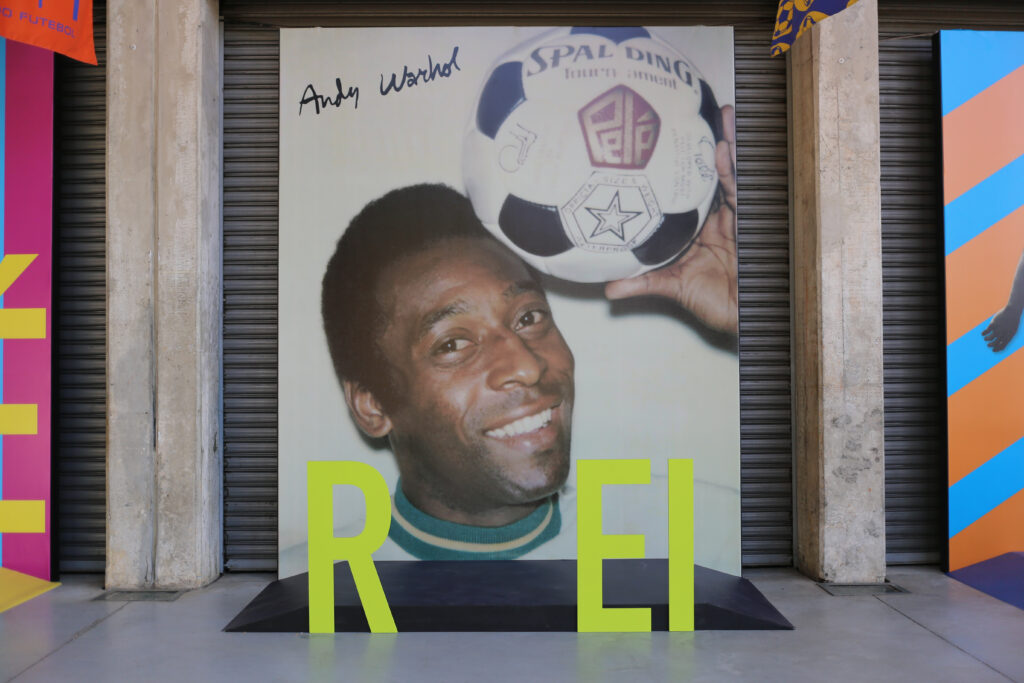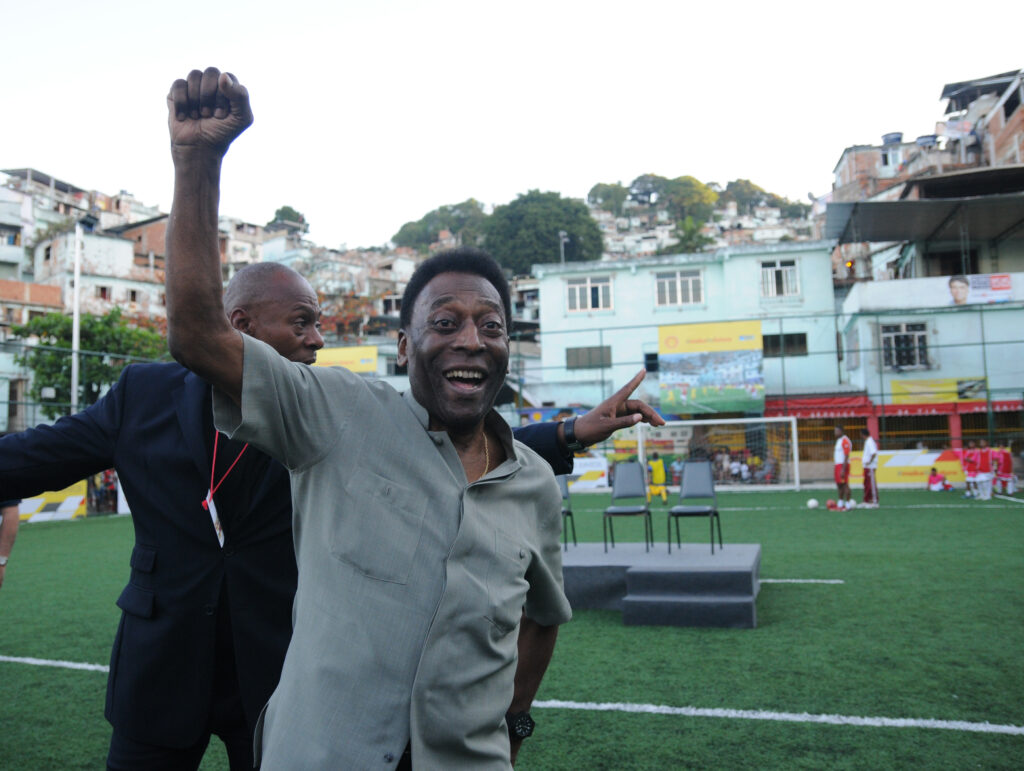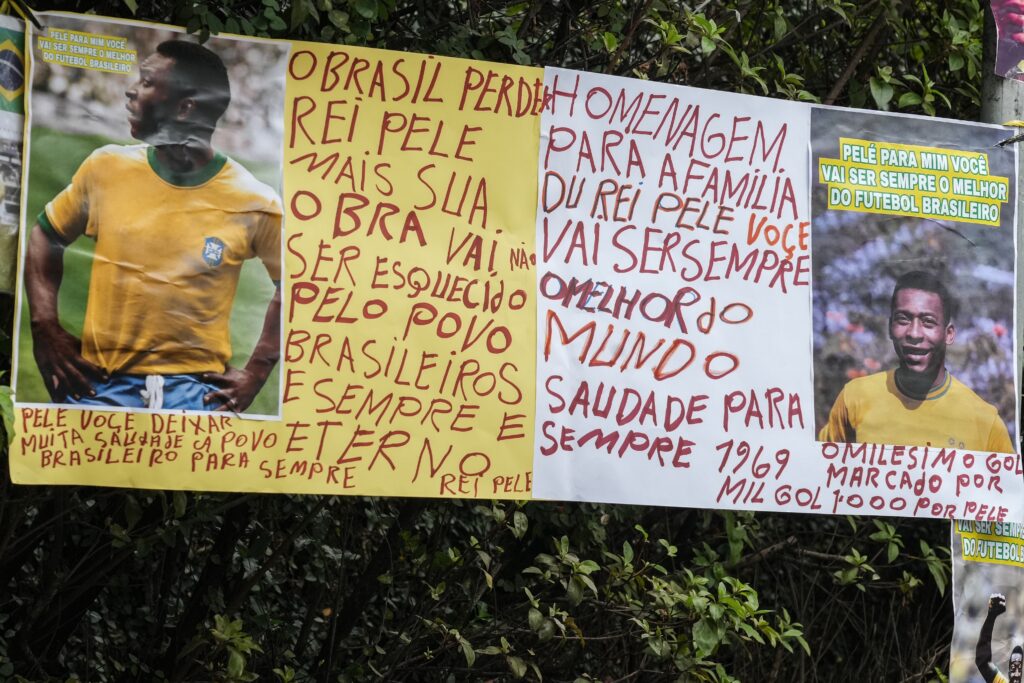
After Fourteen Issues, We’re Taking a Break
FUTBOLISTA Magazine is coming to an end (for now) after the recent release of our fourteenth edition.

In legend and in history, a nation is built upon its heroes. Forever remembered, idolized and scrutinized. Hero status is open to all, for all of time; new champions of the people are continuously welcomed, while the nation’s former contemporary legends are immortalized for eternity in writing. The latter rapidly shift towards other-worldly, mythical characters of national greatness, despite having undoubtedly performed acts of real, inspiring heroism in their time.
The first modern novel, Cervantes’ Don Quixote of the early seventeenth century, wonderfully tells the tale of a protagonist obsessed with the heroism of knight-errantry. The story follows Don Quixote’s absurd, desperate quest to be a hero of his time, to fight for the people of Spain and to represent his very fixed list of a hero’s qualities. To be canonized eternally as a knight of nobility, skill and bravery is Don Quixote’s objective, madly inspired by his reading of books of chivalry.
It is within this perhaps ‘quixotic’ context in which we can understand the national hero, which Cervantes drew upon so brilliantly. Just like Don Quixote’s impractical pursuit of fame, the concept of a hero has its flaws. Talent and outstanding achievement are genuinely inspiring things to witness, but, quite naturally, with time they become ingrained in a country’s romantic history. With the sheer volume of coverage and public attention for the hero, it is little wonder that the original moment(s) of distinction is harder to define.
University professor Walter R. Agard determined in 1928 that the national hero is ‘largely the imaginative creation of their admirers’ due to a repeated lack of ‘historical data’ on the hero in question. At the 1970 FIFA World Cup Final in Mexico, Brazil’s Pelé, the greatest footballer of all time, solidified his legacy as an other-worldly hero. When referee Rudi Glöckner blew the final whistle at Estadio Azteca, with Brazil triumphing 4-1 over Italy, Pelé also became a global hero, certain to never be forgotten. His style of play was free-flowing like the brushstrokes of an artist, and equally as showman-like as a theatre performance. The world had witnessed Pelé’s exploits at the 1970 tournament, and at every World Cup since 1958, creating an international standing as an icon of football through the television screen.
Watching Pelé only once every four years, as is the schedule of World Cup tournaments, contributed to his universal recognition as a godlike figure, particularly in Britain and the rest of Europe. The British rarely took to a foreigner as they did with Pelé; his World Cup magic earned him the utmost respect and adoration, over 5,000 miles away from his birthplace Três Corações. Pelé’s goalscoring record with club side Santos was supernatural, and somewhat shrouded in mystery, from the British perspective.

‘His relationship with the ball was different from that achieved by anyone else’, Hugh McIlvanney wrote in 1990. ‘Other great footballers concentrate on mastering the ball and using it like a tool. For him it often seemed to be a living ally, dancing between and around his sprinting feet as if it chose to be there’. The sense that Pelé was ‘different’ is overriding. He wasn’t simply a good footballer, his relationship with a football was beyond comprehension.
Pelé was a hero, and then a superhero. The rarity with which the British public and media could watch Pelé play made his talent all the more holy – and with good reason. In Mexico, his halfway line lob against Czechoslovakia, free-kick goal versus Romania and famous feint in the Brazil-Uruguay semi-final were real moments of breathtaking sporting ability. And yet, with Pelé’s divine power on the ball, different to anything seen in European football, those iconic moments have become detached from reality. The Brazilian had the greatest footballing ability of all time, which simultaneously fed into the imagination of football fans worldwide. His style of play was so different and so good, it was barely real.
The words used to describe Pelé, the amazing documentaries produced and books written on the great man, many by British authors and creators, are epic in proportion. By 1970, having been mesmerised by Pelé at three World Cups previously, the British were absolutely ready to create much of the iconography surrounding him. The 5ft 8in Brazilian’s spellbinding World Cup displays descended into a folk tale amongst British football fans, and gradually Pelé’s name and style came to symbolize Brazil – both on the pitch and off it.
Where British life was dull and grey, Brazil was perceived to be vibrant and full of celebration. Pelé was the ‘emblem’ of Brazilian society and culture in the iconic yellow shirt, blue shorts and white socks of the Seleção strip. In Mexico, his brilliance on the ball and dribbling fluidity probably cemented the coining of the phrase ‘dancing past defenders’. As he danced through opponents, skipping across the Azteca turf, Brazil came to be regarded as a country of samba, vibrancy and joie de vivre. Pelé, without doubt the first Brazilian to be truly known worldwide, thus defined his nation’s image.
To use Kevin Foster’s book chapter title from Lost Worlds: Latin America and the Imagining of Empire, Europe ‘dreamt’ of Pelé. As Brazil’s most cherished national hero, his play on a football pitch was assumed to be the characterization of Brazilian life. Pelé’s footballing technique was present at every World Cup he played at, from the 1958 competition as a 17 year-old to his last crowning moment in Mexico City twelve years later. His manner of drifting, gliding across the grass with the ball glued to his feet is hypnotic. That ability to keep the ball in tight situations, cover any length of pitch in only a moment and simply to play effortlessly became synonymous with the Brazilian side of Pelé’s era, perhaps none more so than the team that conquered the 1970 Mexico World Cup.

Brazil’s goal in the 86th minute against a tired Italian side, sealing Brazil and Pelé’s third World Cup, is recognised as the very definition of jogo bonito. Pelé may have played only a small part in the goal, rolling the ball to Carlos Alberto for a bullet-shot into the net, but the free-flowing tempo of the move is as associated with Pelé as the entire XI on the field. This prime example of jogo bonito, the beautiful game, demonstrated a different, distinctly Brazilian way of playing football. With the positional freedom afforded to each member of the Seleção, the much-replayed goal at the Azteca has highlighted Brazil’s, and Pele’s, enjoyment of the game. Foster quotes a Brazilian poet, Mário Chamrie: ‘Even if the goal is the real aim of the game, it means less to us than the show.’
From the European view of the time, it was said that in Brazil skill was to be celebrated, and its Pelé-inspired footballing style sacred, while Europe’s best coaches imposed strict, defensive tactical plans. In Peter J. Watson’s book Football and Nation Building in Colombia (2010-2018): The Only Thing That Unites Us, the writer identifies football as having ritualistic qualities in South America. Similarly, Pelé’s jogo bonito can also be considered a ritual. His talent was argued to come from within, as if descended from the gods. Again, it wasn’t football; it was different. Jogo bonito was an experience for the spectator, a show to be enthralled by. In that way, the performance of jogo bonito came to represent the cultural identity of an entire Brazilian people, such was Pelé’s international fame. More than just a way of playing football, it became a lifestyle.
His role on the international arena as the eternal representative of Brazil certainly cannot be understated. Through his rise as the star of jogo bonito, Pelé was elevated to living a quasi-presidential life. Robert M. Levine, an American historian and former Director of Latin American Studies at the University of Miami, noted in the Luso-Brazilian Review that ‘the “national resource” became a national figure: Pelé performed for European royalty; his one thousandth goal was commemorated by a postage stamp. The foreign ministry sent him on good-will trips to Africa, where he appeared in native dress’. Furthermore, Pelé’s honeymoon with wife Rosemari Cholby took place in Germany in 1965, and he was regularly pictured with heads of state across the globe – even well into his retirement from playing football. As a globally-adored footballer, Pelé was Brazil’s true leader in international relations, supposedly free from political tension.
Paparazzi may have followed Pelé religiously, developing rockstar-footballer status, but in truth he was able to transcend politics like no athlete before. In Europe, the intense love for Pelé cultivated an image of Brazil as a footballing nation playing jogo bonito, and little else. Pelé was Brazil. The argument is shared by David Goldblatt in The Ball is Round: A Global History of Soccer, stating that ‘in Latin America, the nation primarily confronted the world as its football team, and in this sphere the continent could compete and excel like no other’. Pelé, Brazil’s competitor on the world stage, was a focus through which Europeans could view and interact with Brazil as a nation.

Pelé’s prominence in the three-time World Cup-winning Seleção side of the mid-20th century brought Brazil fame like never before, furthering his nation’s identifiability and reputation globally. The country was to be respected thanks to its greatest national football team of all time. Although Brazil certainly carried an identity and history prior to Pelé’s rise, its brand of futebol, spearheaded by O Rei, eclipsed everything. Brazil’s national story became one of futebol, abroad and at home.
Far from Estadio Azteca, as Pelé leapt to open the scoring with a well-placed header in the 1970 World Cup Final, the Seleção’s ensuing victory would be celebrated proudly in Brazil. It was Pelé’s third triumph at football’s greatest stage, producing a futebol fever which gripped both Brazil and the world. In Brazilian government, the national team’s sustained success with easy-on-the-eye football was moulded into the formation of a futebol state, i.e. ‘its use by the elite to bolster official ideology and to channel social energy in ways compatible with prevailing social values’. The years leading up to Pelé’s finale in 1970 ‘coincided with… a new willingness among the elite to promote the black athlete as a point of national pride’, Levine argues. Pelé was quite rightly an idol for black Brazilians; his image was also a tool for his homeland’s military dictatorship. Each of Pelé’s defining moments at World Cup tournaments were transmitted to his adoring public with President Médici’s fingerprints all over them. For a struggling dictatorship, the universally popular Pelé and the Seleção were the ideal remedy.
Matt Averna, writing for World Soccer, quotes a 1970 speech from Médici on Brazil’s victory over Italy in Mexico City: ‘I feel profound happiness at seeing the joy of our people in this highest form of patriotism. I identify this victory won in the brotherhood of good sportsmanship with the rise of faith in our fight for national development. I identify the success of our [national team] with…intelligence and bravery, perseverance and serenity in our technical ability, in physical preparation and moral being. Above all, our players won because they know how to…play for the collective good.’
When Brazil won on the pitch, Médici also won. His capture of Pelé and jogo bonito was ‘used to lend political legitimacy to the government’, making political advances with the aid of Pelé’s image and Seleção slogan ‘Forward Brazil’. Typifying authoritarian leadership, Brazil’s dictatorship successfully established a baseless link between the strength of the Seleção and the strength of the nation. As such, futebol was a means of social control throughout 1960s Brazil. It was a vehicle for Médici’s government, masking its oppressive actions behind perhaps the most entertaining, flawless football team (and footballer) in history.
However, it would be illogical to label Pelé as a poster boy of Brazil’s military dictatorship, even though his image quite literally appeared on promotional posters for the regime. Rather, his popularity in Brazil and global admiration was ‘hijacked’ by Médici’s administration. If Pelé was artificially part of a militarised political machine, he was most genuinely the people’s hero. That is the legacy which O Rei cemented at the 1970 World Cup Final; the legacy which he had striven for, and for which he will always be remembered.
On the football pitch, Pelé was the hero of an age of heroes. Part of the most brilliant Brazilian national team in history, his name has risen above all others. In fact, his skill was so awe-inspiring, he ‘helped soccer to acquire a universal dimension’. And that, perhaps, was Pelé’s greatest feat as an icon of sport and culture. Football struggled to become a truly fluid global game, where styles of play mixed and developed, until Pelé transmitted the uniquely Brazilian jogo bonito to the world. Pelé, the player who played the game differently, was a trendsetter. His brand of football was something to be copied and emulated, sparking the progression of football as a sport which would embrace new methods of getting a ball into a goal (see tiki-taka and gegenpressing most recently).

Pelé’s influence on football internationally is unparalleled, a reputation well-celebrated and recognised at home by his adoring Brazilian public. In elevating his country on the global stage with footballing artistry, Pelé became Brazil’s greatest son. He strengthened his people like no Brazilian since Tiradentes (1746-1792), leader of the revolutionary movement against Portuguese colonial rule in the 18th century. While he had earned the right to be called ‘the great Pelé’ (O Grande Pelé) by English commentary teams at the 1970 World Cup Final, by 1970 he was the first true king of Brazil (O Rei).
In Brazil, Pelé has enjoyed national hero status for good reason, but also because he ‘stands for fundamental, permanent ideals which survive in perpetuity’. He was the blueprint for how football should be played, and equally the first black Brazilian to rise from a poor background to international fame. Such was the love for Pelé’s iconic World Cup moments, he fulfilled the role of national hero as a ‘single character raised to a superhuman stature and in effect canonized as subsuming and symbolizing the national character and aspirations’. He was a symbol to be used by the dictatorship, a leader for Brazil in international relations, a God-like figure to be written about and mythologized, but above all the greatest footballer of all time.
For his flair and intelligence on a football pitch which gave joy to so many, Brazilian or not, Pelé’s prize was to be considered an icon for eternity.
The views expressed in articles do not necessarily represent those of FUTBOLISTA Magazine or its editor. FUTBOLISTA Magazine is committed to publishing a wide variety of news and features.

FUTBOLISTA Magazine is coming to an end (for now) after the recent release of our fourteenth edition.
